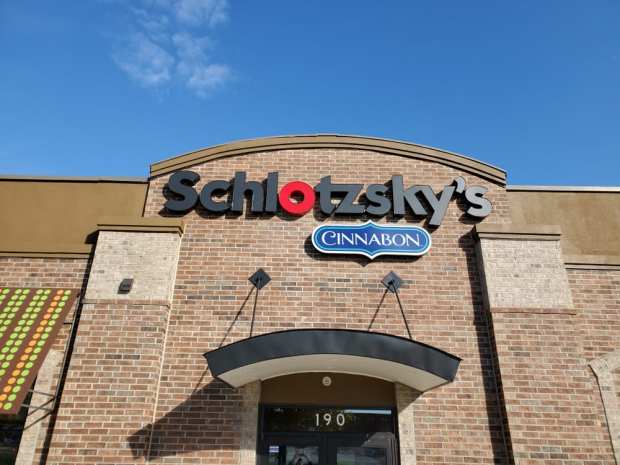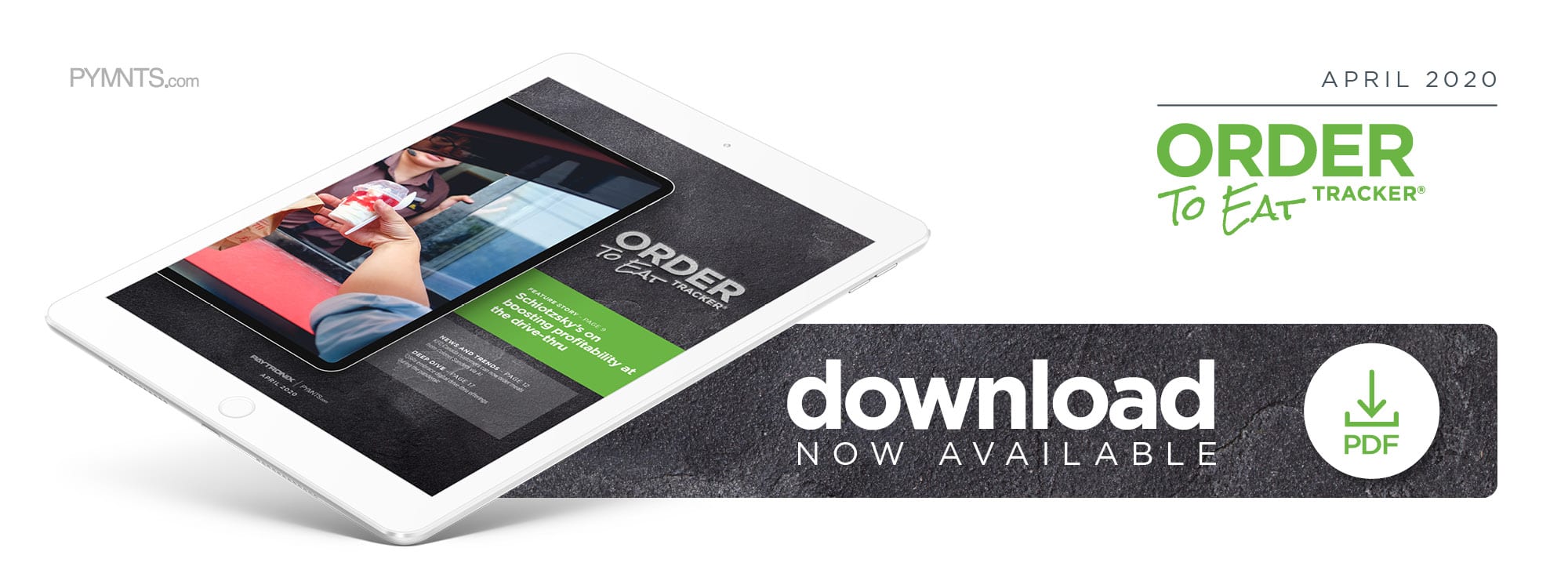Schlotzsky’s On Boosting Profitability At The Drive-Thru

Quick-service restaurants are scrambling to accommodate off-premise food orders as dine-in areas close to slow COVID-19. But for the 20 percent of U.S. restaurants offering drive-thru service, dine-in bans are creating opportunities, boosting revenue and fostering loyalty. In the latest Order To Eat Tracker, Tory Bartlett, chief customer experience officer for fast casual restaurant Schlotzsky’s, discusses how the chain is speeding up drive-thru traffic flow with cloud-based performance metric solutions and digital menu boards.
COVID-19 is rewriting restaurants’ and quick-service restaurants’ (QSRs’) operations as well as consumers’ routines, and establishments are expecting to see increases in drive-thru sales as dine-in areas close. Just 20 percent of U.S. restaurants offer drive-thru service, however, giving the small share of players that have already entered the market a make-or-break opportunity. This is particularly timely because 39 percent of consumers said in 2019 that they received food at drive-thrus more often than they did the year before.
Atlanta, Georgia-headquartered fast-casual restaurant chain Schlotzsky’s is closely following this upward trend. The company, which specializes in serving soups, salads and sandwiches, reported an increase in drive-thru business, third-party deliveries and to-go pickup orders within the past 18 months. Consumers’ rapidly changing preferences are keeping the company on its toes, however.
“What we’re seeing in that trend is a concern [that] we make sure our operations are providing offerings that can grow with that trend,” said Tory Bartlett, Schlotzsky’s chief customer experience officer, in a recent interview with PYMNTS.
Bartlett said the eatery recently began testing two drive-thru prototypes it aims to roll out at some of its 350 nationwide franchise locations. One concept spot, located in Austin, Texas, ditches dine-in seating and instead offers two-sided drive-thru service from a 1,000-square-foot building. One side of the drive-thru accommodates standard orders, while the other is reserved for online order pickup and third-party delivery drivers who pull up, identify themselves and receive their food when they arrive at the window.
Schlotzsky’s is currently leveraging third-party order aggregator teams for its deliveries, but Bartlett said the chain plans to eventually manage such operations through its own platform.
Adjusting Menus For The Drive-Thru
Schlotzsky’s management team is carefully monitoring how best to package drive-thru orders, as some items will retain their temperature better than others once they are taken off-premise.
“We are understanding that more and more people are not going to be eating the food within two or three minutes of preparing it, so we’re making sure everything carries and serves itself representing the brand well,” Bartlett explained. “We know people are going to eat it 30 minutes to up to an hour later.”
Custom pizzas, for example, can be out in less than four minutes and hold very well, he said. Schlotzsky’s changed menu with drive-thru orders in mind, however, removing items that would not keep well — such as flatbread pizzas that quickly lose their heat — from third-party delivery apps.
Schlotzsky’s also plans to test a digital menu board at the new Austin location in an effort to improve customer service at its drive-thrus. The board will display customers’ orders, allowing them to confirm that they are accurate.
“One of the big things is order accuracy,” Bartlett explained. “If a customer orders a Schlotzsky’s Original with no onions, the ‘no onions’ shows up on the screen so you know they sent what they ordered. Those are two big things obviously managing profitability through the drive-thru.”
Speed, Convenience And Accuracy
Understanding and anticipating changing customer demographics and preferences are key to a QSR’s success. Drive-thru demographics — and customers’ desires for certain menu items — can change depending on whether they are ordering on a weekday or weekend, for example.
“On Monday through Friday, there may be one or maybe two people getting their breakfasts or lunches to go,” he said. “Then, on the weekend, it [is likely] a family or more people in the car, so [the demographics slow] down your drive-thru time dramatically and [orders shift] to more pizzas and desserts.”
Schlotzsky’s is working to streamline its traffic flow with the help of Delphi Display Systems’ cloud-based timing solutions. The latter’s technology is designed to control service speeds and display real-time data, delivering performance metrics instantly and enabling crews to adjust their workflows to maximize efficiency. These solutions can also deliver up-to-the-minute insights comparing different locations’ order times and sales metrics, leading to improved drive-thru profitability.
“I believe Schlotzsky’s future in the next five years is going to see more significant focus on drive-thru and taking the food home or eating it in your car,” Bartlett said.
He expects dine-in experiences to be offered only in places where there is ample demand, as drive-thru options eliminate many of the construction, equipment, HVAC and other costs associated with running sit-down locations.
“We get romantic about coming into a restaurant, sitting down and getting the experience, but really, the experience is the food,” Bartlett stated. “For us, [making food] the hero is key — making sure it [has] the best quality and value. We will still build restaurants with dine-in areas, but in markets where we have a solid presence, and we will have other locations with drive-thrus only.”
Schlotzsky’s focus on drive-thru technology developments during what is expected to be a prolonged period of disruption could ultimately foster loyalty among consumers. Trends have shown that customers may not be too eager to head back into dine-in areas once the crisis is over, though.

